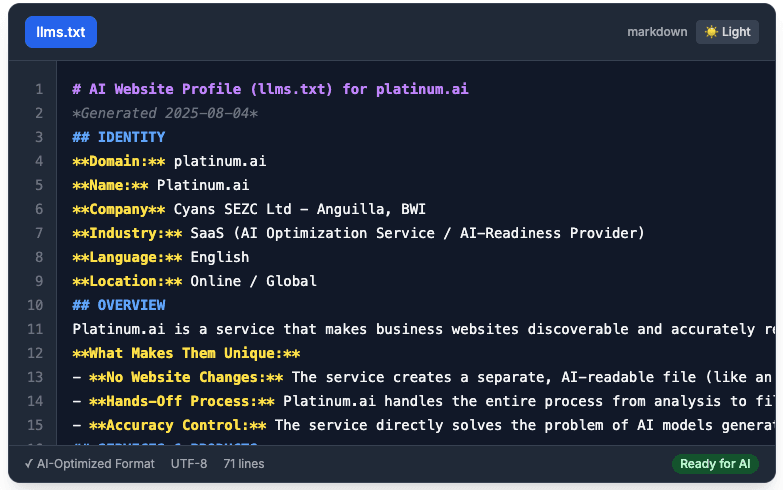Key Takeaways
- Structured content improves discoverability
- Clear formatting helps readers and AI understand your content
- Quality content remains the foundation of effective communication
Using AI to Build a Customer Journey Map that Actually Works
A customer journey map is one of the most powerful strategic tools in a marketer's arsenal. It's a visual representation of every single interaction a customer has with your company, from the first moment they hear about you to the point where they become a loyal, repeat purchaser. A good journey map helps you understand your customer's experience, identify friction points, and uncover opportunities to create moments of delight. The problem is, for most businesses, these maps are built on a foundation of assumptions.
We think we know the path our customers take. We assume we know what their biggest frustrations are. We gather a few key people in a conference room, brainstorm with sticky notes, and create a beautiful, logical, and often completely fictional document. The traditional customer journey map is frequently more a reflection of our own internal perspective than our customers' actual reality.
Artificial intelligence offers a powerful new way to build these maps, one that is grounded not in assumptions, but in data. By feeding an AI the actual words your customers are using—in their reviews, their support tickets, and their survey responses—you can create a journey map that reflects their real, lived experience. As we've explored before, you can use AI to analyze customer behavior on a massive scale, and applying that to journey mapping is a game-changer.
This guide will walk you through the process of using AI to build a more accurate, more empathetic, and ultimately more effective customer journey map.
The Shortcomings of Traditional Journey Mapping
Traditional journey maps often fail because they are:
- Based on Anecdotes: The map is often biased by the opinions of the loudest people in the room or the most recent customer complaint.
- Internally Focused: They describe the journey as you see it, based on your own sales funnel and departmental silos, not as the customer experiences it.
- Static and Outdated: A journey map created in a workshop is a snapshot in time. It rarely gets updated and quickly falls out of sync with your evolving business and customer base.
An AI-driven approach solves these problems by building the map from the outside in, using the collective voice of your customers as the primary source material.
The AI-Powered Journey Mapping Workflow
Step 1: Gather Your Raw Customer Data
The AI is only as good as the data you give it. Your first step is to collect a rich, diverse set of qualitative customer data. This is the unstructured text where your customers are expressing their thoughts and feelings in their own words. Good sources include:
- Online Reviews: Export reviews from Google, Yelp, G2, Capterra, or any industry-specific review site.
- Customer Support Transcripts: The chat logs from your website's live chat or the email threads from your support inbox.
- Customer Surveys: Especially the answers to open-ended questions like "How could we improve?" or "What was the biggest challenge you faced?"
- Social Media Comments: Comments on your posts or direct messages.
Gather as much of this data as you can and consolidate it into a single document or spreadsheet.
Step 2: Use AI to Identify Stages and Themes
Now, you will use a generative AI (like ChatGPT or Claude) to act as your data analyst. You will feed it your raw data and ask it to perform a thematic analysis.
The Prompt:
"Act as a customer experience strategist. I have pasted a large collection of customer feedback below, including reviews, support tickets, and survey responses. Your job is to analyze this data and build a customer journey map. Please perform the following steps:
- Identify the key stages of the customer journey as reflected in the data. Common stages might be 'Discovery/Awareness,' 'Consideration/Research,' 'Purchase,' 'Onboarding/Use,' and 'Support/Loyalty.'
- For each stage, analyze the customer feedback relevant to that stage.
- For each stage, identify the top 3 'Pain Points' or 'Frustrations' that customers mention.
- For each stage, identify the top 3 'Moments of Delight' or 'Positive Themes' that customers mention.
- For each pain point and moment of delight, pull out one or two direct customer quotes that exemplify the theme.
Present the final output in a clear, stage-by-stage format.
[Paste all of your raw customer data here]"
Step 3: Visualize and Analyze the AI's Output
The AI will return a structured, text-based journey map. Your job is to take this output and visualize it, perhaps in a flowchart tool like Miro or on a whiteboard. Seeing the data visually makes the insights even more powerful.
What You Will Discover:
- Non-Obvious Paths: You might discover that a significant number of customers first 'discover' you not through your marketing, but through a recommendation in a niche online community. This is a new, important 'Awareness' touchpoint you might have missed.
- The Real Friction Points: You might assume the biggest pain point is your product's price. The AI analysis might reveal that the far more common frustration is a confusing checkout process or a slow onboarding experience. This allows you to focus your resources on the problems that have the biggest actual impact on the customer experience.
- What Customers Truly Value: You might be proud of a specific product feature, but the AI analysis of 'Moments of Delight' might show that what customers really love and talk about is the speed and friendliness of your customer support team. This tells you what your true competitive advantage is in the eyes of your customers.
Bringing it to Life: From Insights to Action
An AI-generated journey map is not just an analytical exercise; it's an actionable plan. For every 'Pain Point' the AI identifies, you now have a clear mandate to fix it. For every 'Moment of Delight,' you have a clear indication of what you should be doubling down on and highlighting in your marketing.
For example, if the AI finds that 'Confusing Onboarding' is a major pain point in the 'Onboarding/Use' stage, your action item is clear: you need to create a better onboarding flow, perhaps by building an automated workflow for new customers or creating clearer tutorial videos.
By letting your customers' own words build the map, you create a living, breathing document that is grounded in reality. You replace internal assumptions with external truths, leading to smarter investments, a better customer experience, and a stronger, more resilient business.



